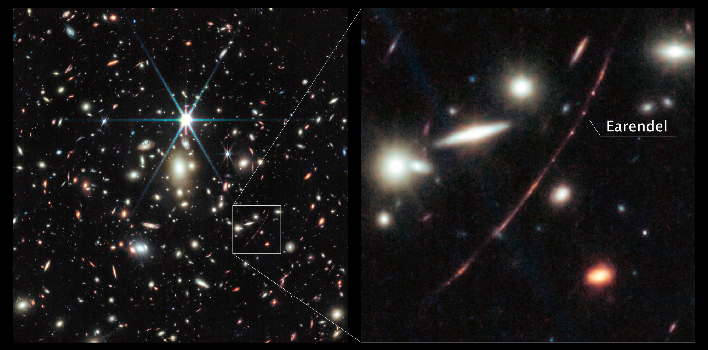Wrinkle In Space-Time Enables JWST To Spot The Most Distant Star Ever Detected
Earendel, a massive B-type star, is located in the Sunrise Arc galaxy. JWST and Hubble were able to capture an image of the vastly distant star with the help of what NASA calls a "lucky alignment behind a wrinkle in space-time" that was created by the galaxy cluster WHL0137-08. This galaxy cluster is located between Earendel and Earth and is said to be so large that it warps the very fabric of space itself. It is this warping of space-time that provides the much-needed gravitational lensing needed to capture an image of Earendel.
When Hubble captured the first image of Earendel, Brian Welch of the Johns Hopkins University in Baltimore, remarked, "We almost didn't believe it at first, it was so much farther than the previous most-distant, highest redshift star." He added, "Earendel existed so long ago that it may not have had all the same raw materials as the stars around us today. Studying Earendel will be a window into an era of the universe that we are unfamiliar with, but that led to everything we do know."

The massive star is thought to be twice as hot as our very own Sun, and around a million times brighter. Earendel is thought to have existed in the universe's first billion years.
A couple of other features Webb was able to image include young star-forming regions and older established star clusters said to be as small as 10 light-years across. On both sides of the wrinkle of maximum magnification, which NASA says runs right through Earendel, those features are mirrored by the distortion of the gravitational lens.
Astronomers are still currently analyzing data from Webb's observations of the Sunrise Arc galaxy and Earendel. This continued investigation will hopefully provide precise composition and distance measurements for the galaxy.

